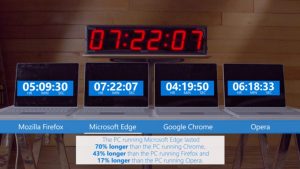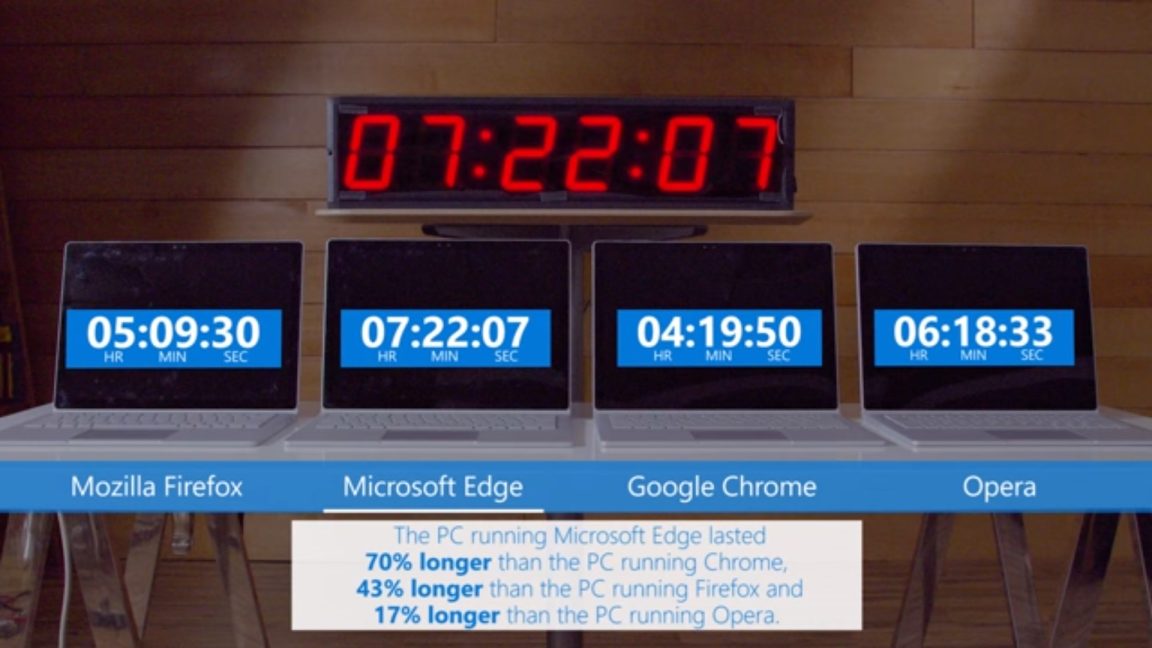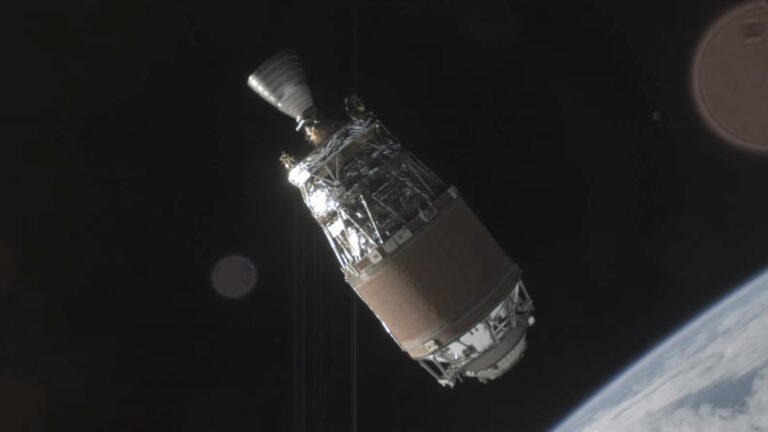It's no big secret that Google's Chrome browser is a bit of a battery hog. The native browsers on both Windows and macOS (Edge and Safari) are widely reported to outlast Google's offering. In its latest campaign, Microsoft is quantifying this difference: in a test of video playback Microsoft's latest browser lasted 7 hours and 22 minutes on a Surface Book system. Chrome lasted just 4 hours and 19 minutes.
Between these extremes were Firefox, at 5 hours and 9 minutes, and Opera in battery-saving mode, at 6 hours and 18 minutes.
Microsoft has gone a step beyond just measuring how long each system runs by measuring the power draw of the Wi-Fi, CPU, and GPU during a test workload that cycled through some common sites including Facebook, YouTube, Wikipedia, and Amazon. This task drew 2.1W in Edge, but pulled 2.8W in Chrome, 3.1W in Opera, and 3.2W in Firefox. This lower draw translates to the longer battery life.
The Windows 10 Anniversary update is making further changes to improve Edge's power efficiency. Some of these tweaks are surprisingly small—for example, changing how certain animations are performed in the toolbar to allow greater offloading to the GPU—whereas others are larger.
Flash content that is not deemed to be central to a page's content will become click-to-play, which is something that other browsers also do. Background tabs will also use fewer resources by making their JavaScript timers fire less frequently and by using coalescing to ensure that they all fire together and hence reduce the number of times that the processor must be woken up. This shouldn't interfere with listening to music or, say, checking for mail in a background tab, but it should reduce the overhead due to spurious animations and so on.


